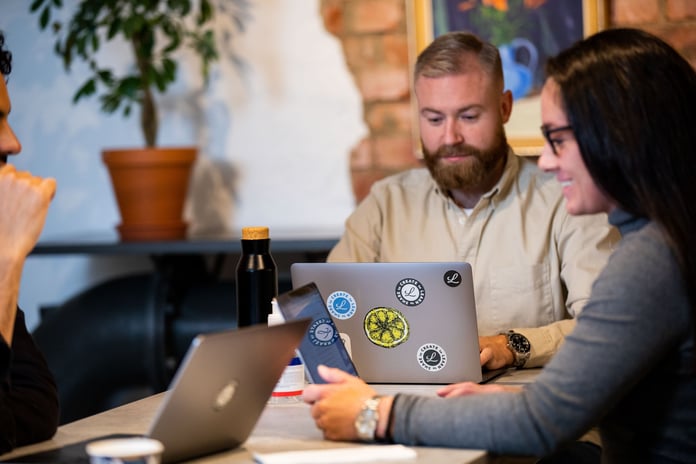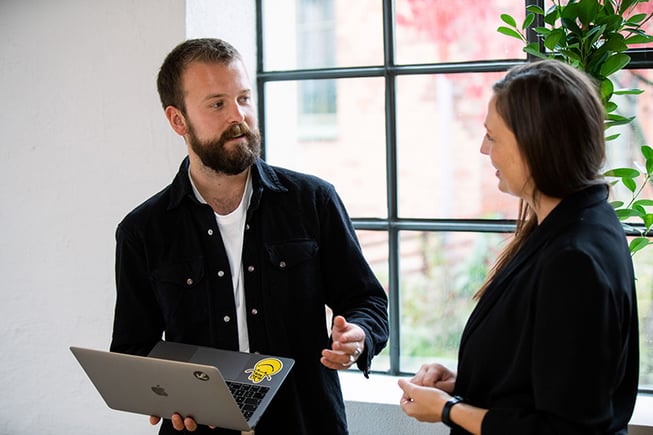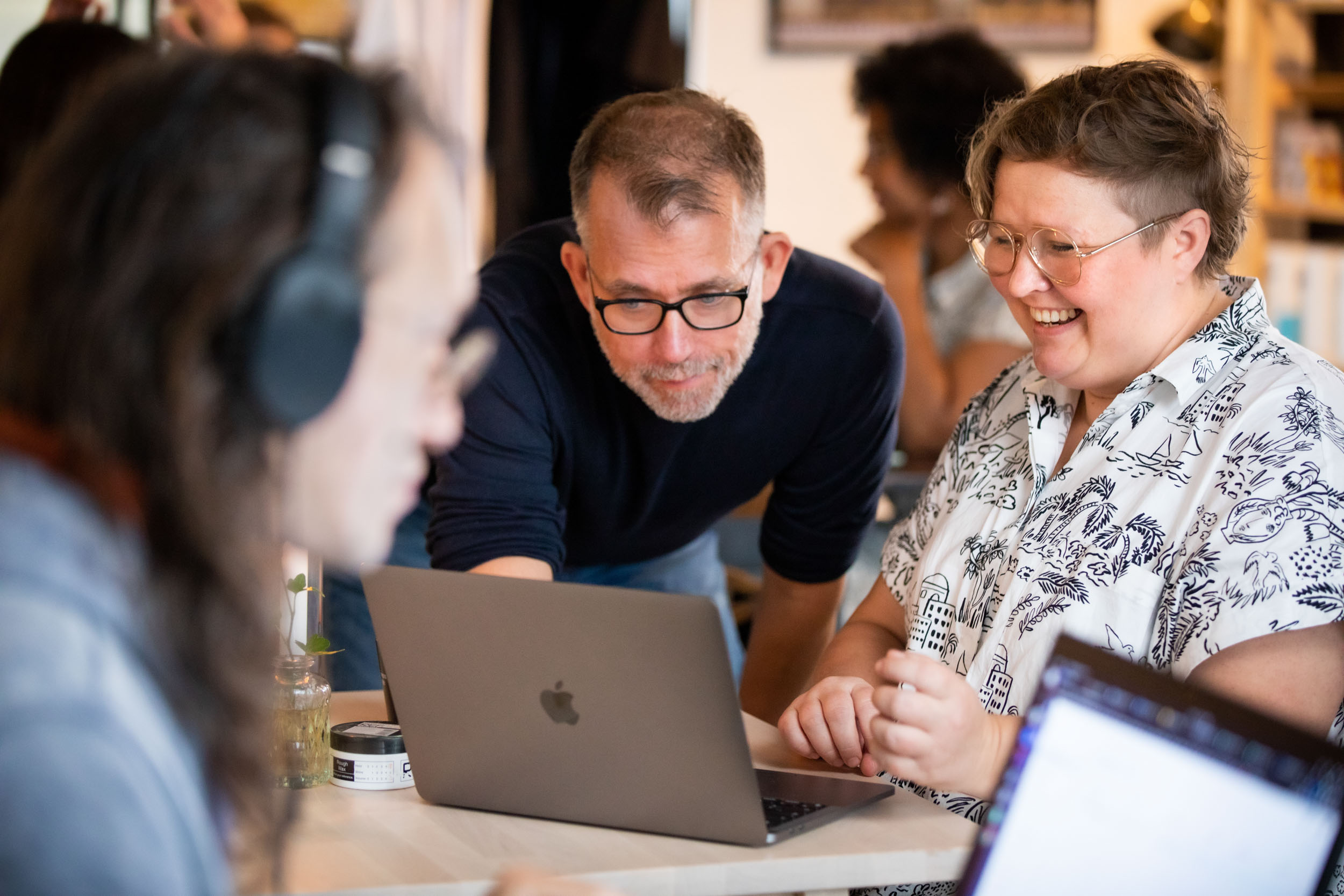Although most learning today can be digitalized, there is certainly still room for traditional learning methods. Many have discovered the benefits of "the golden mean" – blended learning.
But what does it really mean? And what does the future of learning really look like? Let’s find out.
With a simple Google search, you quickly realize that there is not one simple definition of what blended learning is. There are thousands. But let's just say it is about using both online and in-person learning experiences in a mix. If you get the balance right between these components it can work wonders for your organization.
While the digital elements create efficiency, greater dissemination capacity and faster results that are easier to measure, the physical interaction fills a universal need. But what does even physical interaction mean today?
The last two years have taught us that it is just as easy – if not easier – to conduct courses, trainings, lectures and meetings entirely with the help of digital tools.

Let's get physical?
Some love the traditional "classroom model". The only question is whether it is the methodology itself, or the social aspects and what we are familiar with, that attracts? We believe in the latter. And the fact is that blended learning already today takes place almost exclusively in the digital. In addition, this modern environment is many times more social than the traditional one.
The last two years have taught us that it is just as easy – if not easier – to conduct courses, trainings, lectures and meetings entirely with the help of digital tools. And as the technological solutions are refined, there is less need for the traditional learning environment where we are physically in the same place. So, the "physical elements" in blended learning more often refer to webinars than actual classroom learning.
Increased knowledge and more social time
All studies show that a good learning platform both frees up time, increases competence and creates greater commitment among the learners. And the fact that your entire team or organization is gathered on the same digital platform – which you have access to anywhere and anytime – does not exclude that you can also meet IRL. In fact - you will have more time for it.
A strategy and vision are needed to have your online and offline parts interact. In addition, you need a platform that covers all your current and future needs.
The flipped classroom
A common example of social interaction in blended learning is "the flipped classroom", which means that you turn the traditional concepts. Instead of listening to a lecture and taking notes, the learners first carry out web-based studying on their own and then completely dedicate each lecture opportunity to discussing. This has proven to be a very effective way to take in new knowledge.
Pros and cons of blended learning
Of course, you can’t just throw your organization's existing materials into a digital tool and hope for the best. Blended learning requires that you define who the target groups are, what prior knowledge they have and what is in fact worth digitalizing. In short – a strategy and vision are needed to have your online and offline parts interact. In addition, you need a platform that covers all your current and future needs.

On top of these things?
Then there are basically only benefits of blended learning left.
Major participant benefits:
• Increased understanding of the course content• Increased focus due to less disturbance
• The ability to start and pause learning anytime, anywhere
• The opportunity for social learning, discussion and direct knowledge sharing with other participants or the entire organization
Course leader / organization benefits:
• Reduced costs• Faster ROI
• The ability to follow the participants' development in real time
• Increased control over the course content and the ability to quickly adjust and improve
Since learning is not static, your organization's needs may change over time. The best learning platforms are therefore under constant development – it is the ones that claim to be perfect you should watch out for.
Our tip is to choose a platform with multiple functions, as blended learning always becomes more interesting and engaging when the content is varied and personal. Video, chat, data tracking, webinars and automations that make learning easier for the participant are all vital elements. Also, make sure that the software can be implemented with your existing systems.
________________
- Discover the possibilities with the Learnifier Learning Platform

Learnifier is the leading learning platform in the Nordics. A simple, dynamic and powerful tool for creating and sharing knowledge.
.png?width=153&height=58&name=Learnifier%20TextLogo%20NearBlack%20-%20PNG%20MEDIUM%20-%20800px%20(2).png)






